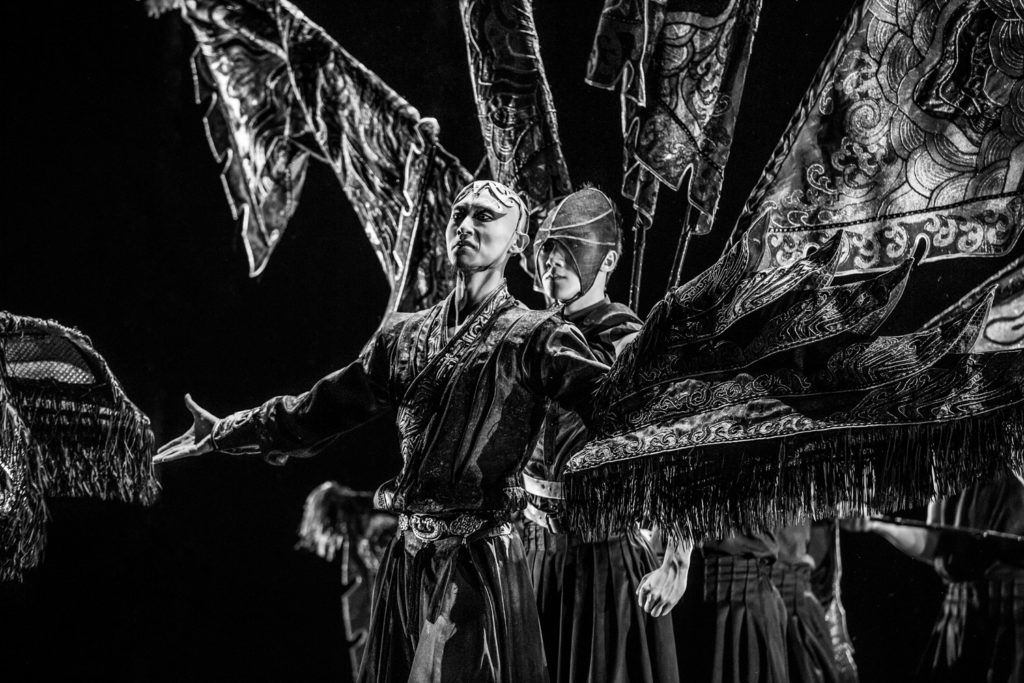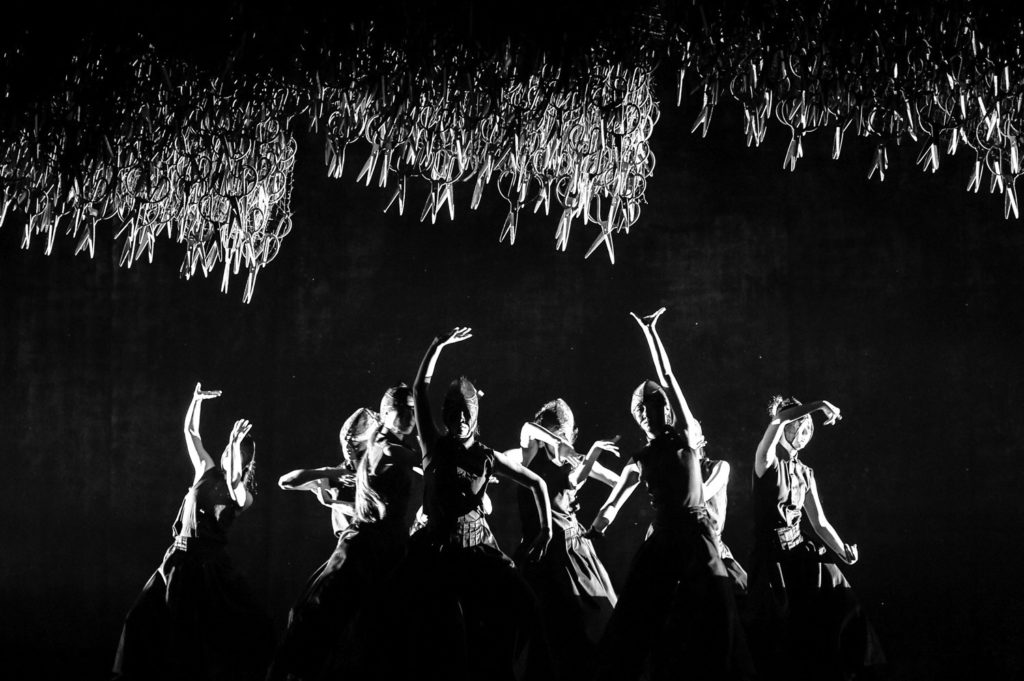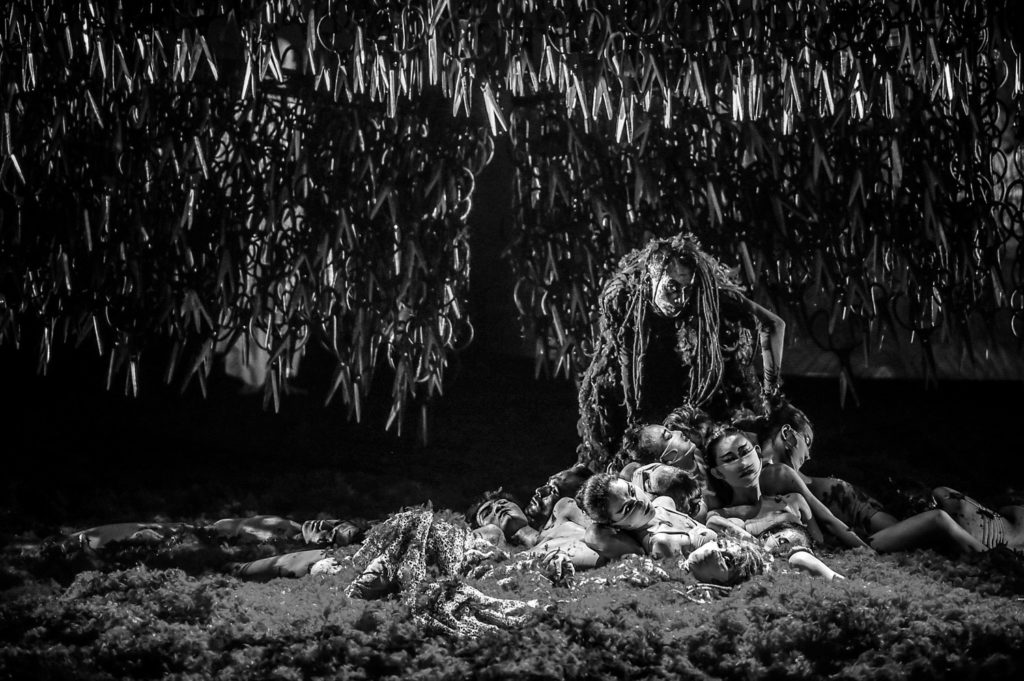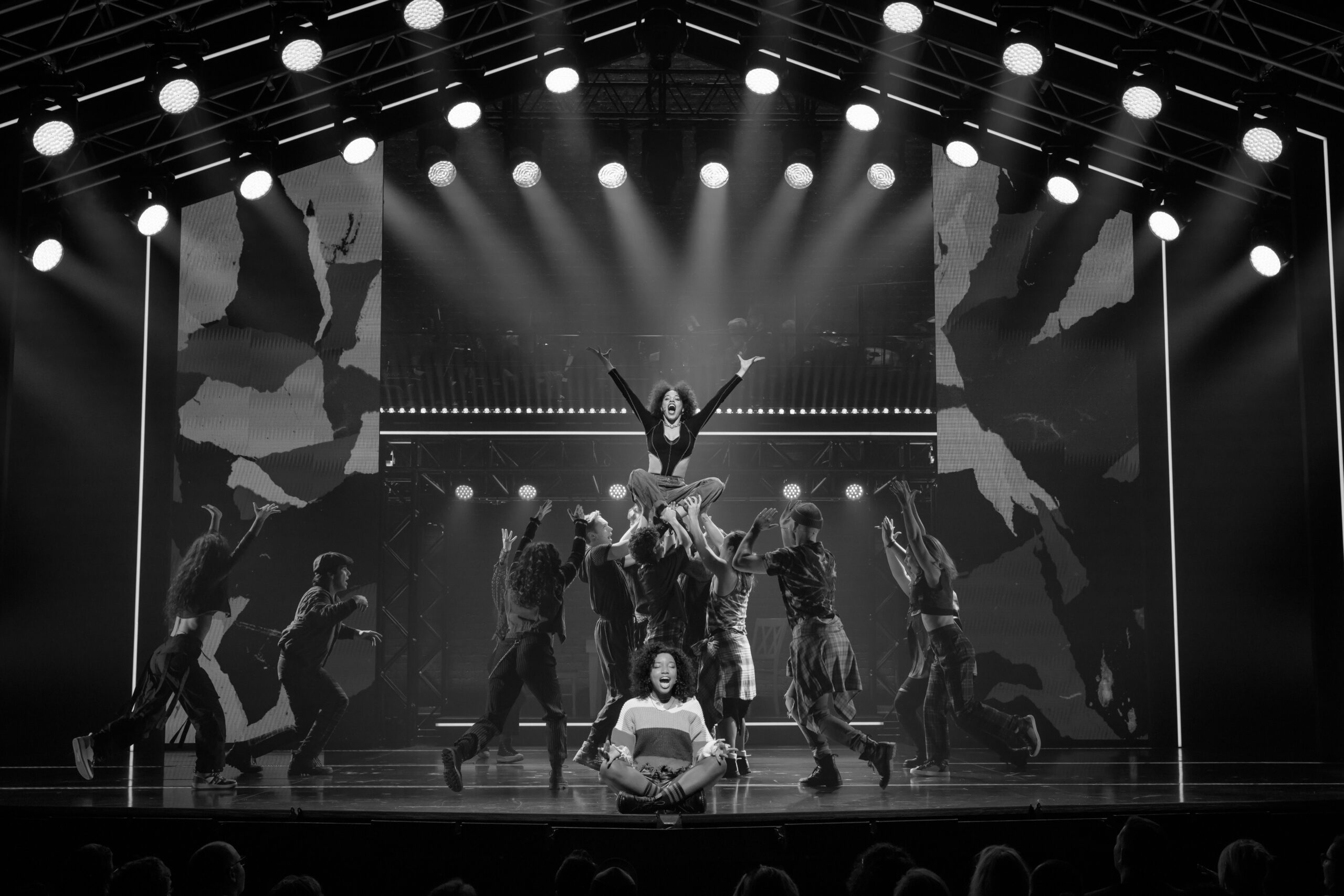UNDER SIEGE
Steeped in tradition from the long lineage of Peking Opera, Yang Lipings’ Under Siege is a performance introduced and narrated throughout by a single performer: the paper cutter, a stoic figure that remains unshaken throughout the work. For western audiences and those not familiar with Chinese culture, paper cutting is a highly regarded art form that dates back thousands of years. In the radical grandeur of this work, we are swept up into an battle waged in faraway lands. Despite being based in ancient history, the work’s approach and command of the performative language makes it relevant and of the times.
The performance plays out in rich episodic fashion with no two scenes the same. The juxtaposition between colour, lighting and rhythm that fuses the traditional with the contemporary makes for a spellbinding two hours. Earlier scenes are slower and lull you into a false sense of safety, followed by the harsh sound of war drums and other jarring sounds. The performance reaches its heights when we are introduced to the king’s concubine. This single performer makes love through his liquid form, with each member of the audience transfixed and unable to be drawn away from his incredible otherness — dance has never been so magnificent.
Some scenes are humorous, others tragic. As the king and his concubine die at the end of long and bloody battle, the revelation of a single red ribbon appearing mid-kiss proceeds to strangle the king’s lover, his body slain, their connection forever broken. The battle scenes are soft, subtle, and underplayed, and in this refinement are simply brilliant. As the soft billowing silk screens that flank this performance rise to bathe the audience in bright lights, each faction of the war appears in battle formation. From billowing smoke and mountainous volumes of red feathers — another metaphor that extends upon the cultural — the bloody field emerges as the performance finally concludes. Rather than resolving in a bloody aftermath of forbidden love, consequence, dynasty and war, the audience is transported to a nonexistent heaven, each character left alone.
Visually, this performance is awe-inspiring: the undulating canopy made of thousands of pairs of scissors touching on visual and cultural metaphors, the costumes rich and sumptuous, the lighting second-to-none. In terms of production, what we see here is everything Opera Australia and other such main stage companies wish to be, but in comparison, come across weak and ultimately lazy. As any other festival, Melbourne Festival has the capability to bring such amazing international work to local audiences, and for their choice in presenting Under Siege, our city should be grateful. Indeed, with the work receiving no shorter than a twenty minute standing ovation, it would appear we are not only grateful but truly aware of the cultural significance of this work.








